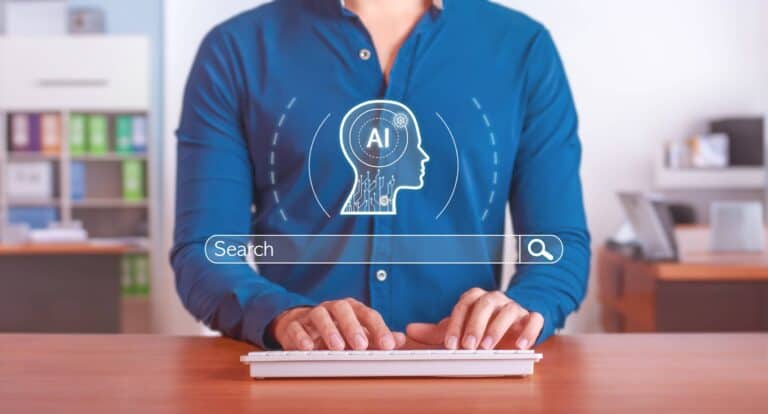AI-Powered Customer Service in 2025: How Local Businesses Can Handle More Inquiries with Less Staff
Picture this: It’s Saturday evening, and your restaurant is getting flooded with online reservations, menu questions, and special requests. Your small team is already stretched thin handling in-person diners. Meanwhile, a local competitor just launched 24/7 instant response capabilities without hiring additional staff. How? They’ve embraced AI-powered customer service.
The Local Business Customer Service Challenge
Small businesses face a critical dilemma: customers expect instant responses at all hours, but maintaining a full customer service team is cost-prohibitive. According to a recent study by Zendesk, 67% of customers say faster response times significantly improve their satisfaction with a company. Restaurant owners, retail shops, salons, and local service providers all share this common pain point. Your customers want immediate answers about your hours, availability, prices, and services – even when you’re busy serving other clients or closed for the day.
AI’s Game-Changing Impact
Modern AI-Powered customer service solutions aren’t just for big corporations anymore. They’ve become sophisticated enough to handle complex inquiries while remaining affordable for local businesses. A well-implemented AI-Powered customer service system can manage 70-80% of routine customer questions, dramatically reducing the burden on your staff.
Think of AI as your tireless digital employee who:
- Never takes breaks
- Responds instantly to common questions
- Learns from each interaction
- Speaks multiple languages
- Costs a fraction of a human employee
Real-World Applications
Consider Erin, a salon owner who implemented an AI-Powered customer service chat on her website. Her AI digital receptionist now handles appointment inquiries, answers questions about services and prices, and even helps clients understand which treatments might best suit their needs. This freed her reception staff to focus on in-person clients and complex consultations.
Or take Mike’s hardware store. His AI-Powered customer service solution responds to inventory queries, provides basic DIY advice, and can even process simple orders. The result? His three-person team now effectively manages double the customer inquiries they handled before.
Implementation Without Overwhelming Your Team
Starting with AI doesn’t mean overhauling your entire operation. Begin with these foundational steps:
First, identify your most common customer queries. Review your emails, messages, and phone logs. These repetitive questions become your AI’s initial knowledge base.
Next, choose a solution that integrates with your existing tools. Modern AI platforms can connect with your booking system, inventory management, and customer database, providing seamless responses based on real-time information.
Finally, start small. Launch your AI assistant with basic functionalities and gradually expand its capabilities as you learn from customer interactions.
The Human Touch Remains Essential
AI isn’t about replacing your team – it’s about empowering them. When a local gym implemented AI customer service, their staff reported spending 60% less time answering basic questions. Instead, they focused on personalized training consultations and member retention activities that actually grew their business.
Your AI assistant handles the routine while your team handles the relationships. This partnership creates a superior customer experience where quick questions get instant answers, and complex needs receive focused human attention.
Measuring Success
Track these key metrics to gauge your AI implementation’s effectiveness:
- Response time improvements
- Customer satisfaction scores
- Staff time saved
- Inquiry handling capacity
- After-hours engagement
One local bookstore found that adding AI-powered customer service support increased their after-hours sales by 35% simply because customers could get immediate answers about book availability and placing orders.
Getting Started Today
Begin by auditing your current customer service workload. How many inquiries do you receive daily? What percentage are routine questions? This baseline helps you choose the right AI solution and measure its impact.
Next, research AI platforms designed for small businesses that provide businesses with:
- Easy setup and maintenance
- Integration with your existing tools
- Customization options
- Clear pricing based on your usage
- Strong privacy and security features
Future-Proofing Your Business
As AI technology continues to evolve, early adopters gain a significant advantage. Your AI system becomes more effective over time, learning from each interaction to provide better service.
Conclusion
AI-powered customer service isn’t just transforming how local businesses operate – it’s leveling the playing field. Small teams can now provide enterprise-level customer service without enterprise-level resources. The question isn’t whether to implement AI, but how quickly you can get started before your competitors do.
Ready to explore how AI can transform your customer service? The solution might be simpler and more affordable than you think. [Consider adding a call to action with a specific incentive, e.g., “Schedule a free 15-minute AI consultation and discover how to reclaim hours of staff time.”] Your future customers – and your staff – will thank you for making the leap.





